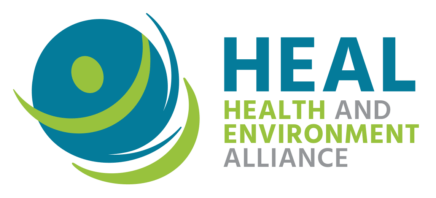Press note: HEAL calls on the European Parliament to maintain health within the scope of the Committee on the Environment, Public Health and Food Safety.
The Health and Environment Alliance (HEAL) welcomes the European environment ministers’ demand for more ambitious and swifter action against harmful chemicals from the European Commission, Member States and ECHA [1]. The European Council conclusions agreed upon today lay out the strategic direction that the EU’s future policy on chemicals should take, and highlight in particular REACH, endocrine disruptors, nanomaterials and pharmaceuticals as priority areas.
Genon K. Jensen, HEAL’s Executive Director said: “These conclusions come at exactly the right time. We welcome the vision and demands, as they stress the urgent need for an overarching strategy to lead Europe’s transition towards a non-toxic environment. People across Europe continue to feel the health impacts from toxic chemicals – it has to be the next European Commission’s absolute priority to reduce people’s exposure to harmful chemicals such as endocrine disruptors or PFAS and encourage business investment in substitution towards safer alternatives”.
HEAL particularly welcomes the following points:
- The repeated commitment to the deliverables of the 7th Environmental Action Plan (EAP) and the urgent request for the European Commission to conform with them, including the development of a European strategy for a non-toxic environment;
- The reiterated demand for a concrete action plan as well as a timeline for the development of a new strategy for endocrine disrupting chemicals (EDCs) with a focus on reducing people’s exposure to EDCs, as well as a horizontal approach for the hazard-based identification and risk management of these hormone disruptors;
- The recognition of per- and polyfluoroalkyl substances (PFAS) as a group of substances of high concern for human health and the demand for the Commission to develop an action plan to eliminate all non-essential uses of PFAS;
- The call on the European Commission to speed up the implementation of the REACH review actions, in a context of obvious deficiencies in the current application of the regulation. Examples of these actions include speeding up the identification of substances of very high concern (SVHCs), properly implementing information requirements for registration dossiers to improve their quality, considering more efficient uses of restrictions for groups of chemicals, increasing the quality of the analysis of alternatives when discussing authorisations; and in so doing, allocating sufficient resources to the European Chemicals Agency (ECHA) to deliver;
- The recognition that several aspects of the current chemicals assessment and regulation need upgrading. Examples of these include the necessary update of test requirements, the introduction of requirements for regulations to take into account cocktail effects, the necessity of a mechanism to coordinate the protection of vulnerable groups, the development of an early-warning system to identify emerging chemicals risks, and the overall need for more coherence between chemical-related regulations.
Several of the actions agreed in the conclusions constitute essential aspects of HEAL’s vision for a non-toxic environment [2]. HEAL’s Executive Director will once again bring those important messages to European decision-makers at the European Commission’s High-Level Conference on the future of Europe’s chemicals policy, starting tomorrow, 27 June, in Brussels [3].


